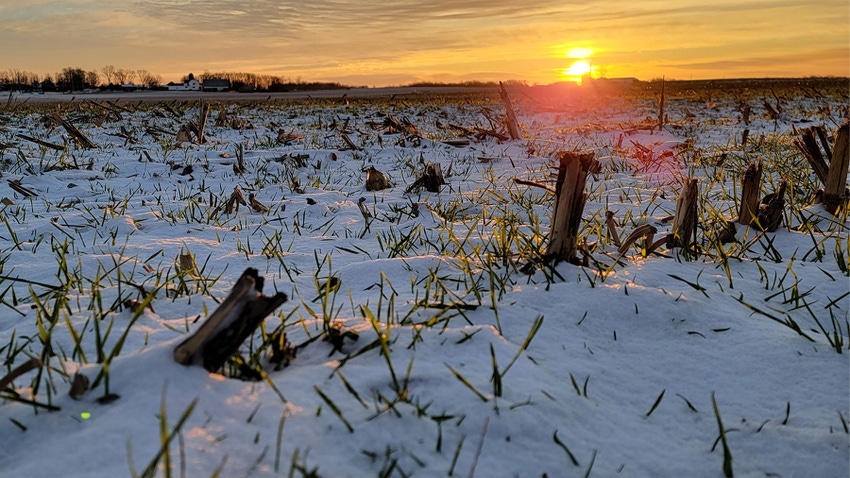February 5, 2024

With the rise of cereal rye as a reliable cover crop, Tom McKinney, Tipton County, Ind., decided to test it out on his own operation. That was a little over five years ago, but McKinney says the benefits of his decision keep popping up as he continues to learn.
In addition to improved soil health, McKinney saw a benefit last spring when he could cut back on his herbicide usage. The following information applies to McKinney’s experience with cereal rye seeded into corn stubble, but he says the results have been similar when seeding into soybean residue.
Ditching fall burndown
A recommended and uniform seeding rate of cereal rye allowed McKinney to skip his typical fall burndown prior to the last growing season. He says he didn’t need to seed a higher rate of cereal rye to see this success; rather, he had good timing and experienced favorable weather to create an optimal stand for weed control.
“We wanted the population of the cereal rye to be thick enough, or at least consistent enough, to where it was going to choke out any weeds,” McKinney adds.
He says he usually applies a 2,4-D and dicamba mix in the fall to control broadleaves in corn stubble that will see soybeans the following spring, but the solid cereal rye stand made that application unnecessary.
The following spring, the benefits continued as McKinney had to apply a burndown only for the cereal rye and grass weeds. The broadleaves had been controlled by the cereal rye alone.
Carbon credit dollars apply
The cost of seeding cereal rye breaks even with the savings McKinney gained by not applying herbicide in the fall. That cost is about $8.50 per acre.
However, newcomers to cover crops can save on making the switch by freeing up carbon credit funds. When producers cut back on herbicide usage, companies can pay them carbon credit dollars and offset some of the costs associated with seeding a cover crop.
“If my savings in not having to use broadleaf herbicide basically pays for my cereal rye, then that frees up the carbon credit funds to pay for the tillage or pay for the air seeder to mount on your tool, or to hire a neighbor to do it,” McKinney explains. “It’s a whole new paradigm change that’s just developed in the last few years.”
Considerations for making the switch
The largest consideration McKinney recommends making when adding cereal rye to an operation is debating what equipment to use. He prefers mounting an air seeder on his vertical tillage tool to incorporate the seed.
“For the most part, we really like the vertical till tool with an air box on it where we blow [seed] through the lines,” McKinney says.
McKinney bought an air seeder that he attaches to his Great Plains Turbo-Max tillage tool. However, he says the Kuhn Krause Excelerator will do the same job.
Another important factor is maintaining an even spread when seeding to ensure an optimal stand. He says producers can try using a fertilizer truck to blend seed when spreading fertilizer, or they can simply double spread.
About the Author(s)
You May Also Like






